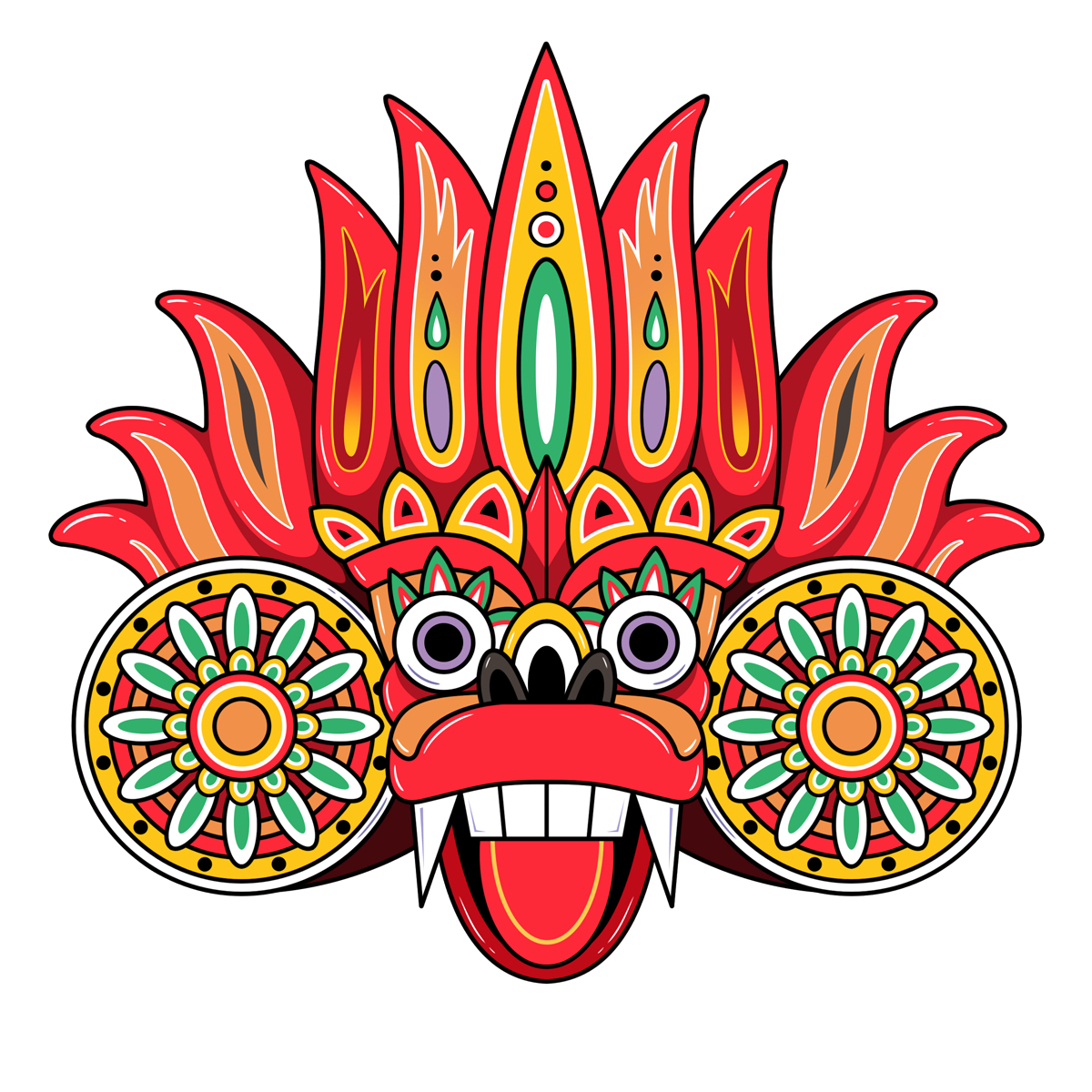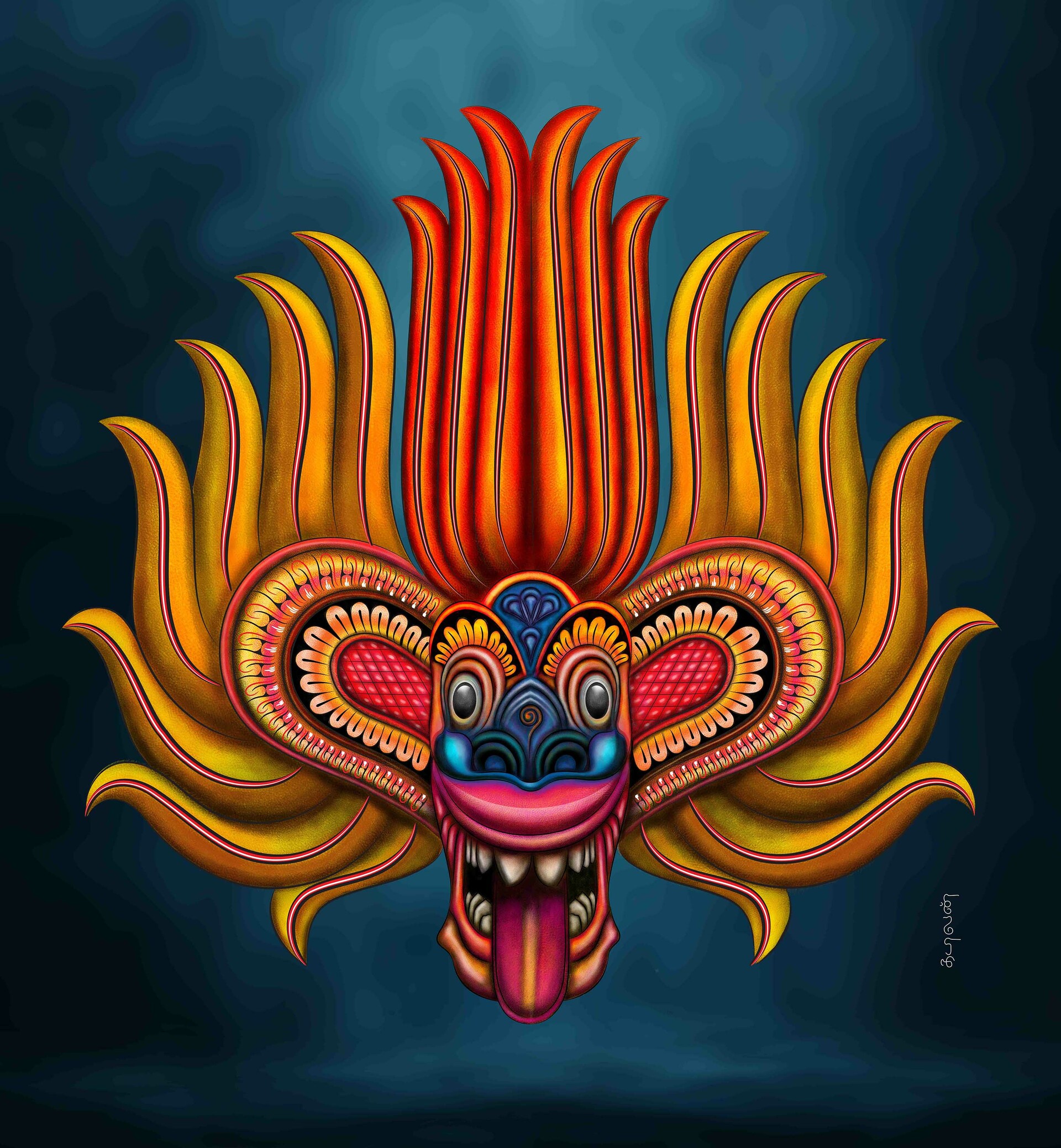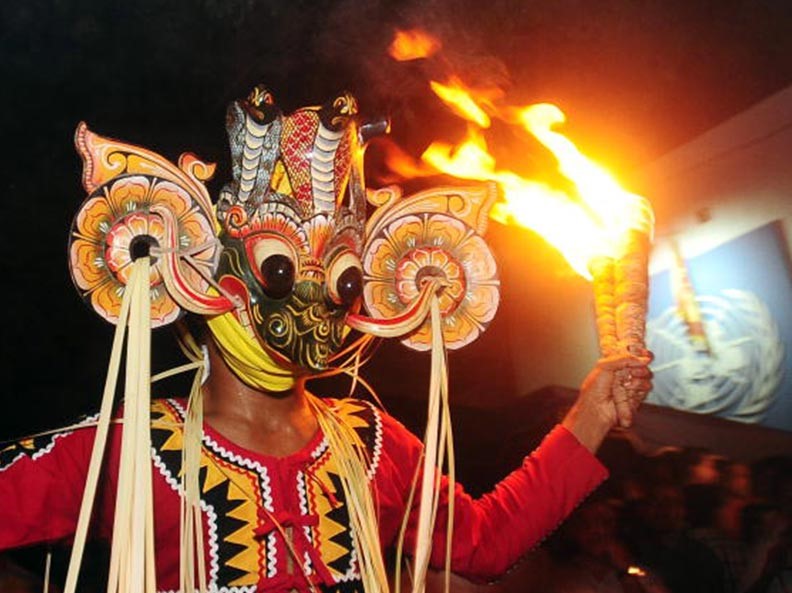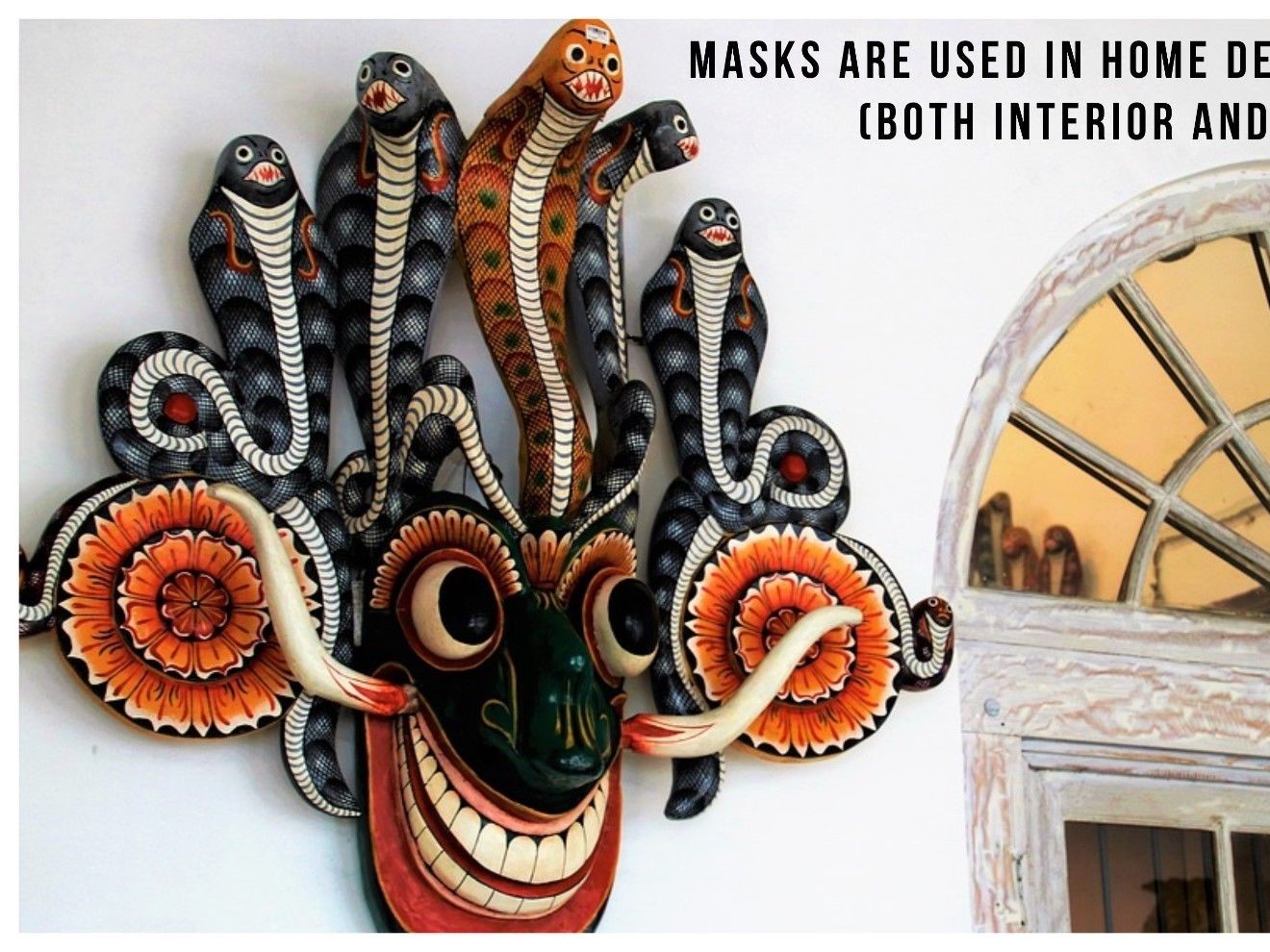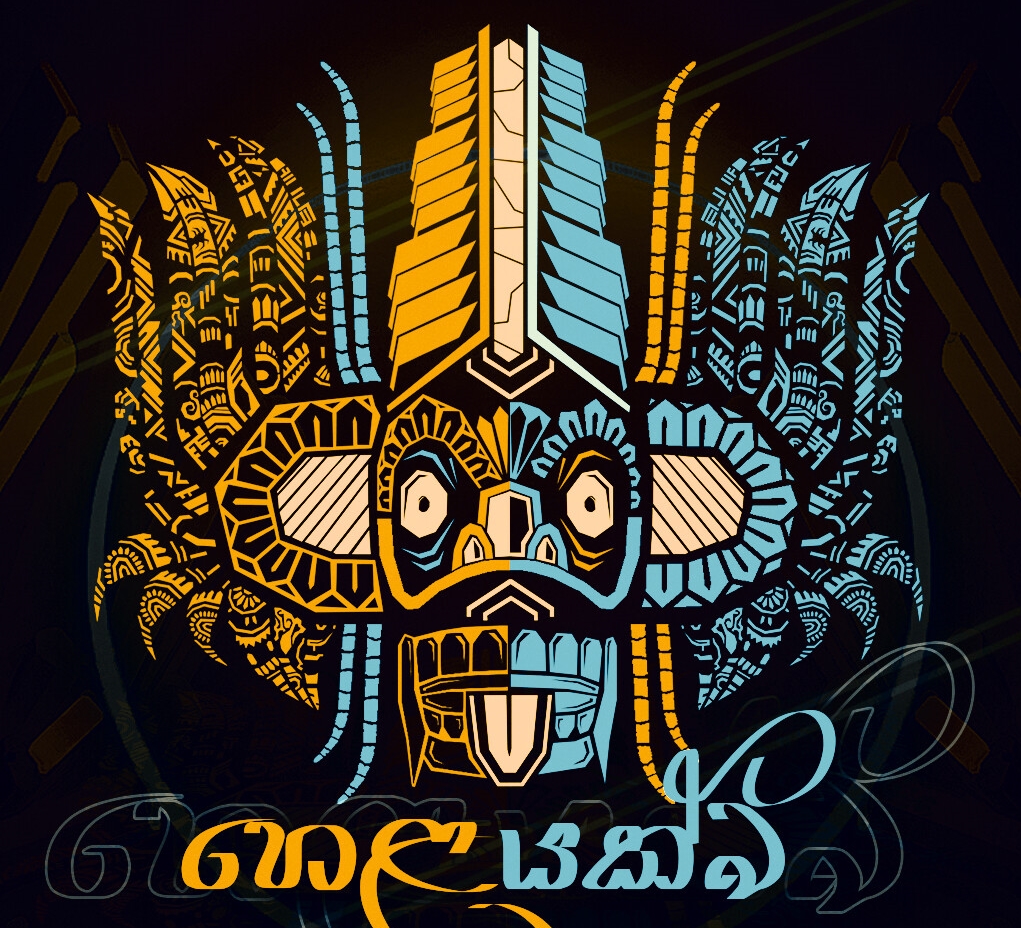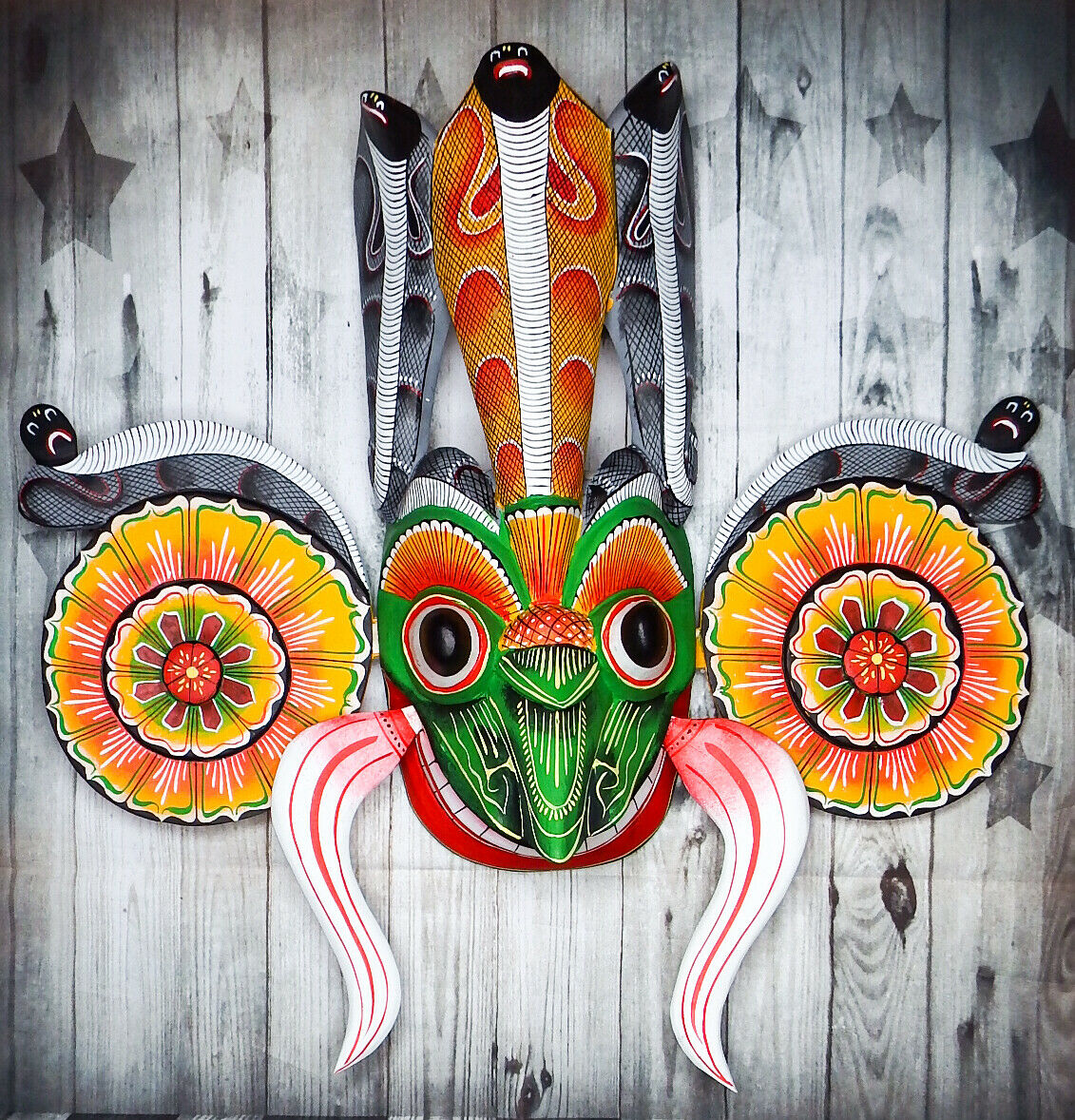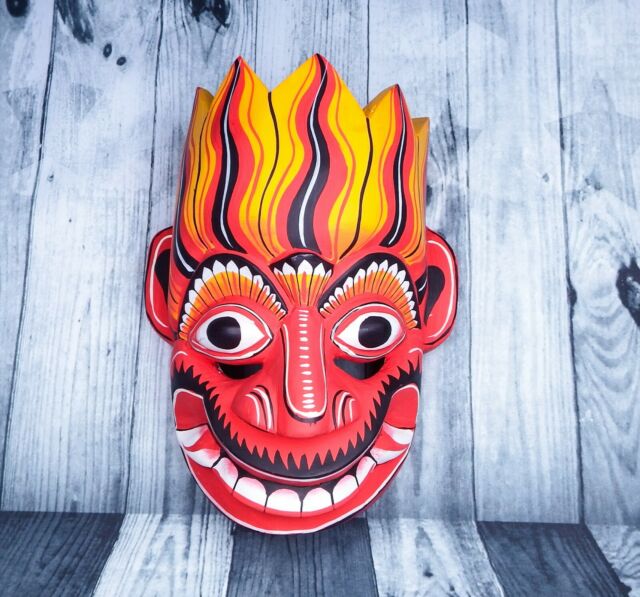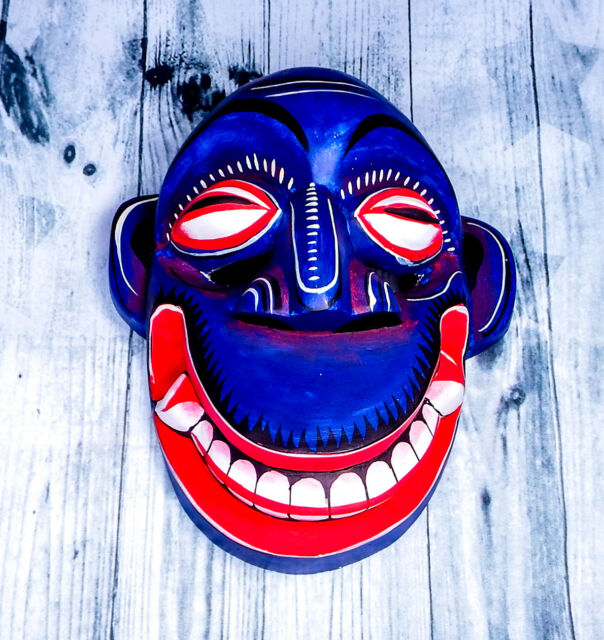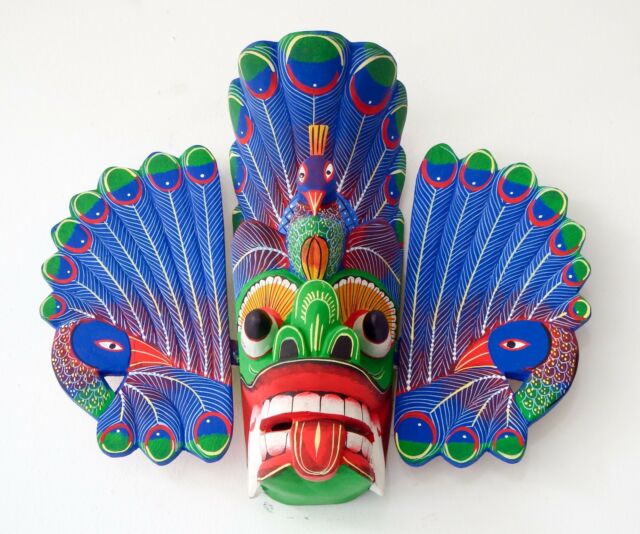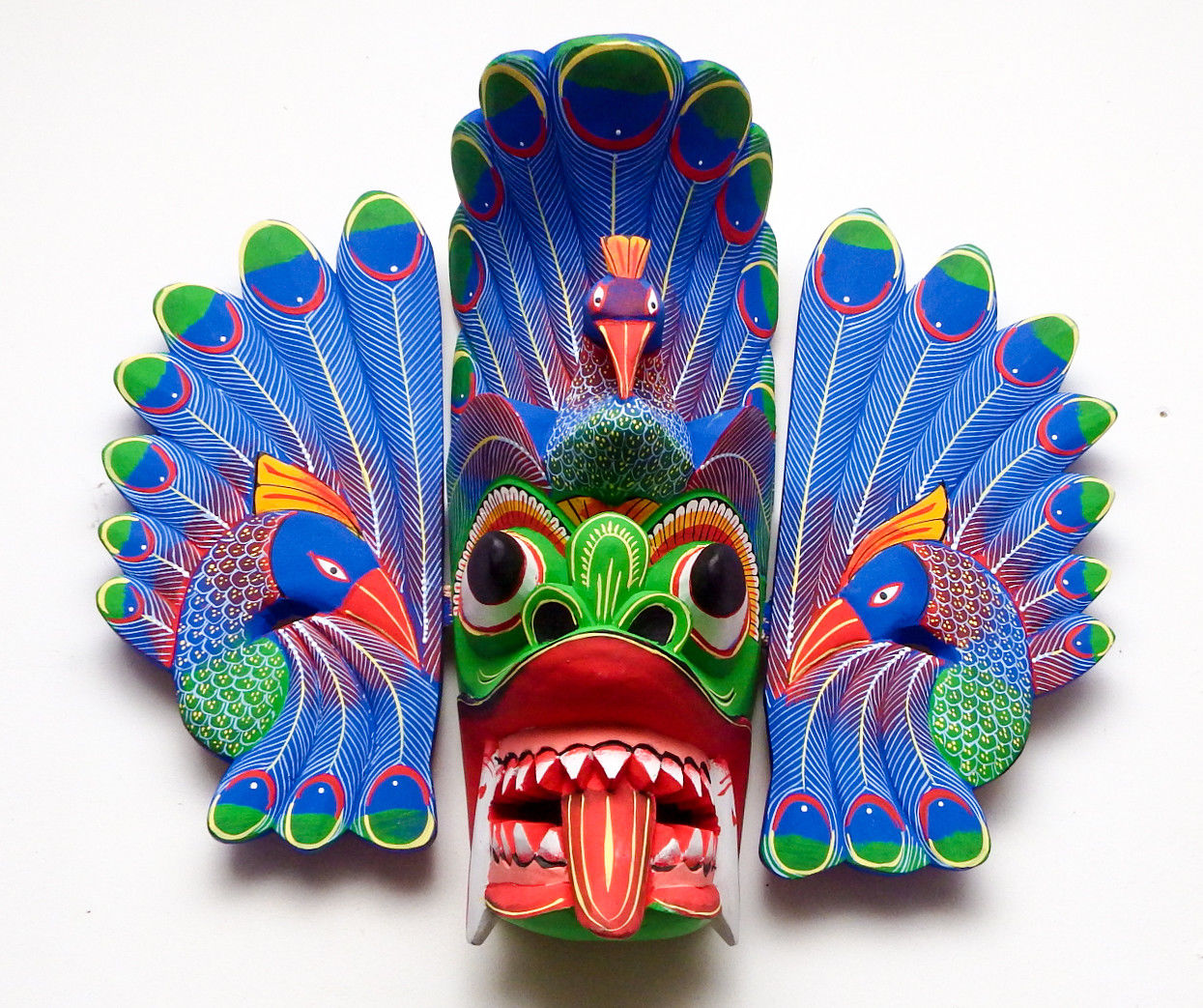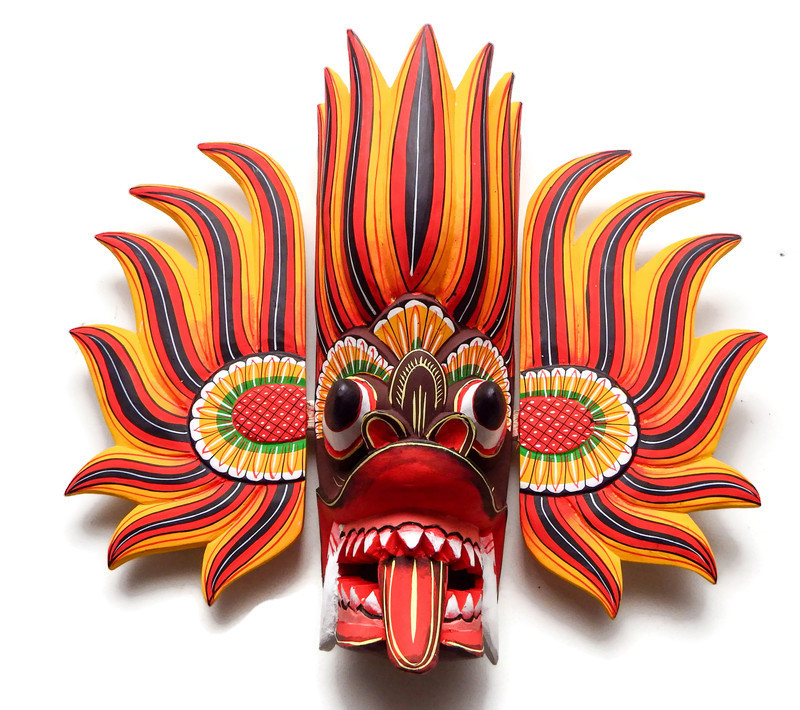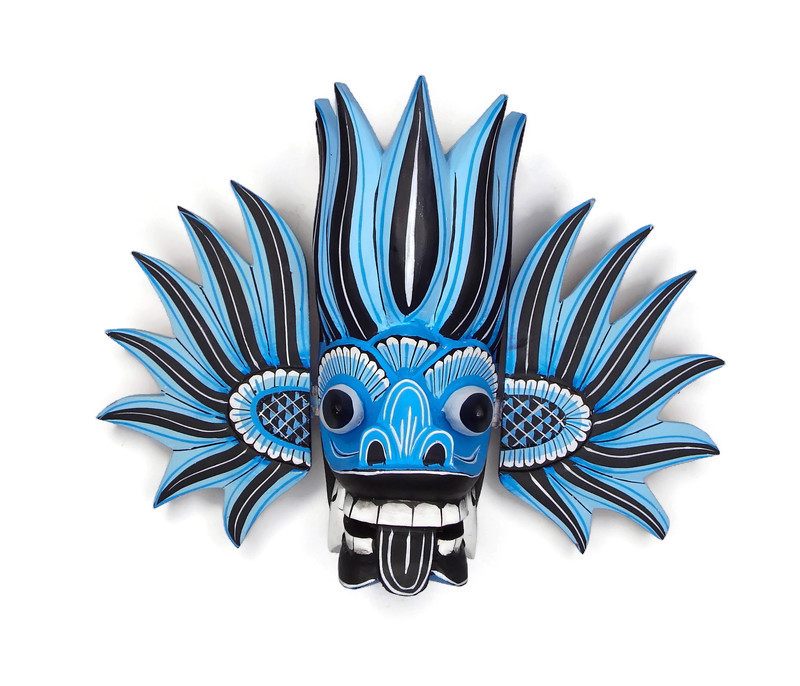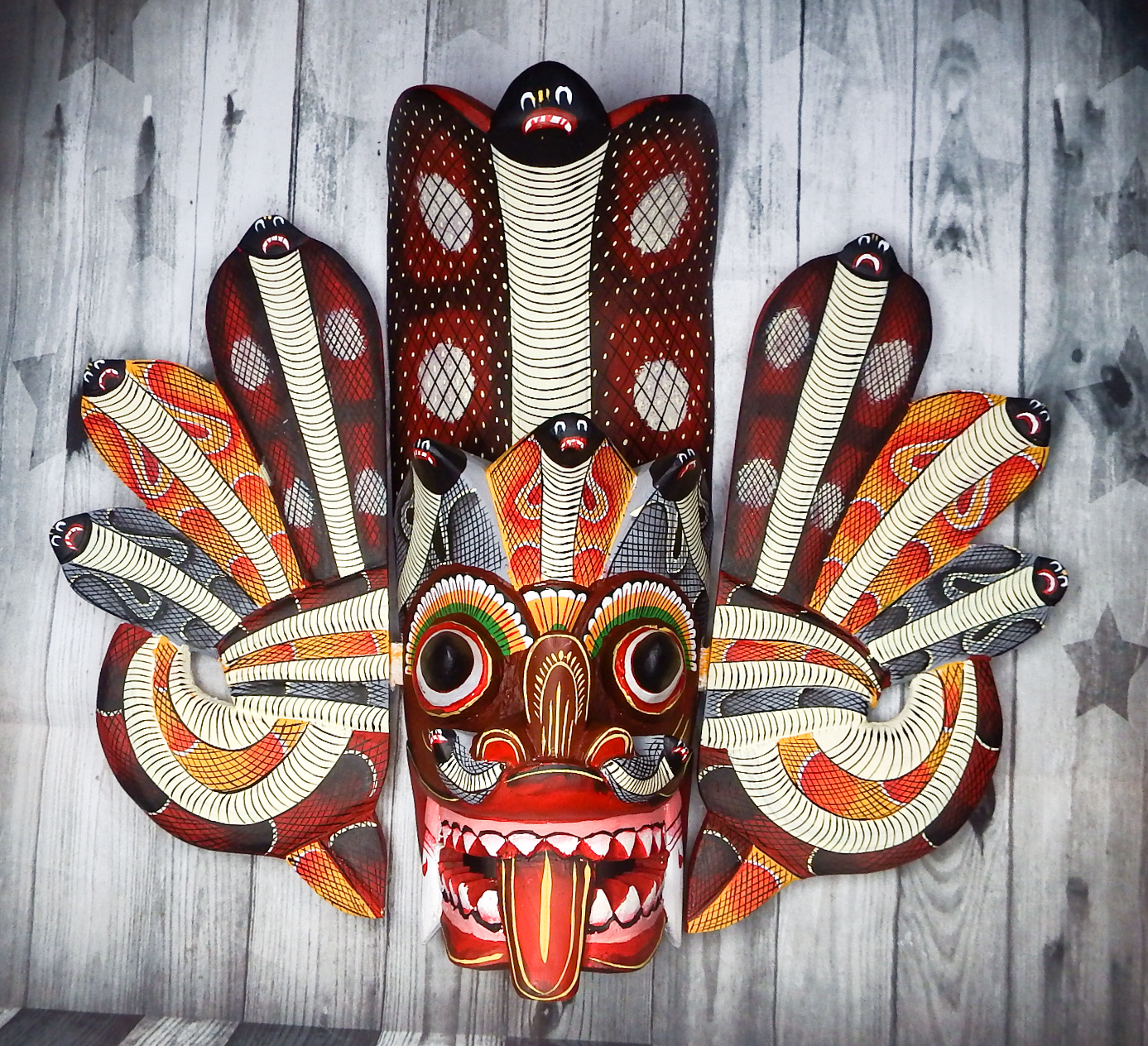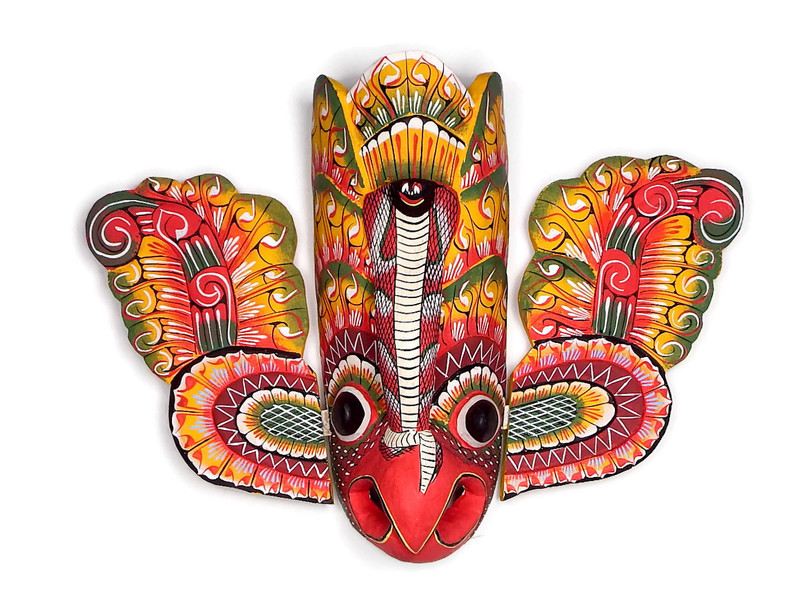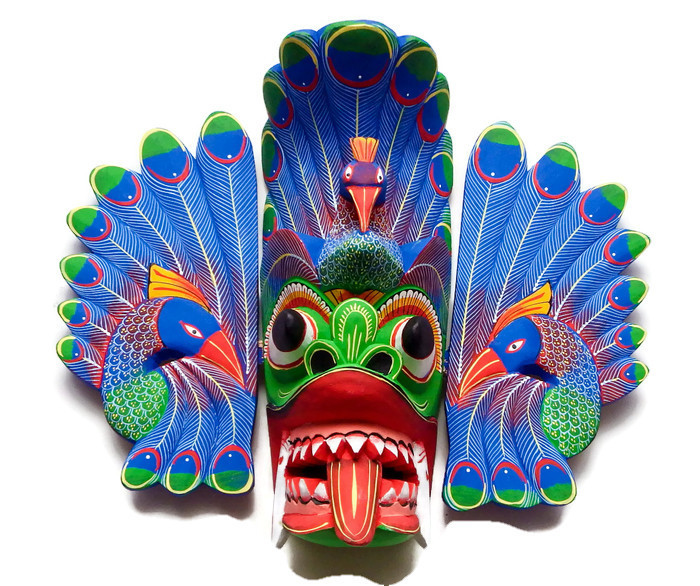Kolam Natima – Pranks, Social critique and Religious Ritual?
- Kolam: masquerade, disguise, carnival, fantastic appearance
- Natima: dance

A Kolam performance is full of absurd exaggeration and comic dialogue. Ordinary people recognize themselves in the situations and characters in the performance. The mask dance, Kolam Natima, is an art form from the south-western part of Sri Lanka.

In Kolam we see the world through the eyes of the villager. The masks give life to characters from daily life:
- the village headman, arrogant and vain
- the tom-tom-beater, poor and oppressed
- the Muslim, the village butcher
- the old married couple, afraid of demons and wild animals
- the returned soldier, wounded and sick from the war against the British and
- the young beauty, married to an impotent old man.
Observing from the side-lines, is the king, Maha Sammata, the first king of humans. He represents the epitome of good government - divine rule in harmony with the order of existence. He is not part of the actual performance. His large mask is placed in the position of the observer.
The demons of the underworld also have important roles to play in Kolam: We meet the general of the army of demons, Purnaka, the snake-demon, Raga Naksha, and others.

Kolam Natima is about the daily lives of ordinary people where comic situations alternate with tragic ones. The plot plays out between the worlds of the gods and the world of the demons - in the in-between place allocated to humans.
Today Kolam performances rarely last from dusk-to-dawn, but the tradition lives on in shorter plays.
Masks and measures
The masks are carved according to specific measures, passed on through verses called Ambum Kavi ('carving-verses'). About Maha Sammatha's king mask the Ambum Kavi tell:
The mask of Maha Sammatha is five Vijathas high. The shoulders are three Viyathas and three fingers in breadth. Two sides of the head are decorated with a scroll work or a liyavel creeper design. These sides are called Thiringi Thale. On the head a lotus in full blossom is carved.

'Viyatha' is an old measurement equal to the hand of an adult man. 'Thiringi Thale' is a design depicting sansara, th endless succession of births in which human existence is trapped.

From the the museum treasure trove

According to the museum catalouge, the majority of the Kolam masks were purchased from Carl Hagenbeck in Hamburg in 1885.
Many of the early collections in European ethnographic museums in Europe came from private collectors who acquired, exhibited and traded in exotic objects for profit. Some went further, and imported and exhibited exotic people. One of the most famous was Carl Hagenbeck, founder of the Hamburg Zoo. He wanted to show the animals in their proper surroundings. So he also brought people from different cultures to his park - among these, a group of Sami people from Finnmark in Norway.
We know that a group of Kolam dancers stayed with Hagenbeck in Hamburg. Possibly the masks in the Museum of Cultural History in Oslo come from these dancers.
Play of the Gods
The stories performed in Kolam Natima belong to Sinhalese folk tradition. As an introduction to the play the narrator tells the following story in verse form:
The First Queen of a great king was pregnant when signs of evil forces appeared: Her face withered, her nipples turned green, and she lost her appetite for healthy food. Soon she was attacked by "dola-duka", a strange craving affecting pregnant women. More than anything she desired to see a masked dance. But at this time, there were no such dances in the country. The king was at a loss and his terrified advisors had no advice to give.
Finally, the king went to bed without eating. Sakra, the king of Gods, took pity on him and sent the god,Vishvakarma to help. Vishvakarma made a set of masks and placed them in the king’s garden together with the script to a mask-play. The next morning the king’s gardener found the masks and alerted the king. The king told his men to study the script and then perform a mask-dance. The queen was satisfied and her cravings disappeared.

When the narrator has finished this introduction, the mask-play left by Vishvakarma is performed. The god Vishvakarma has since been regarded as the protector of woodcarvers.










